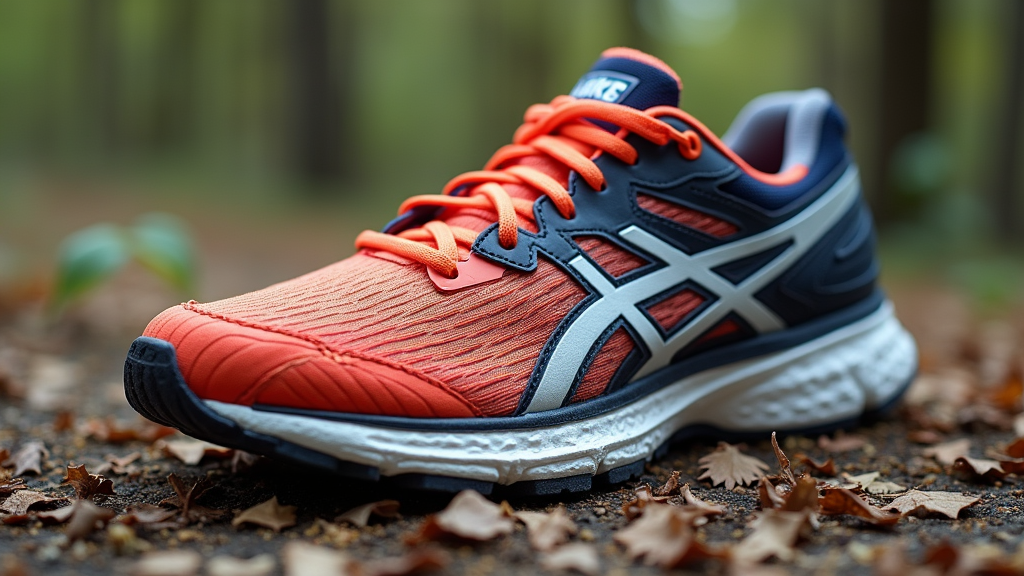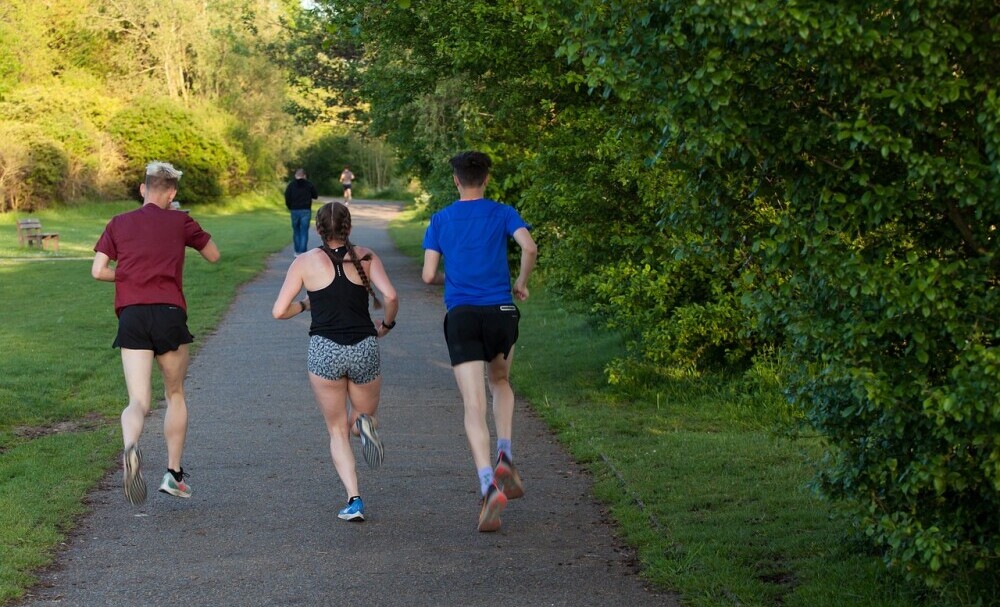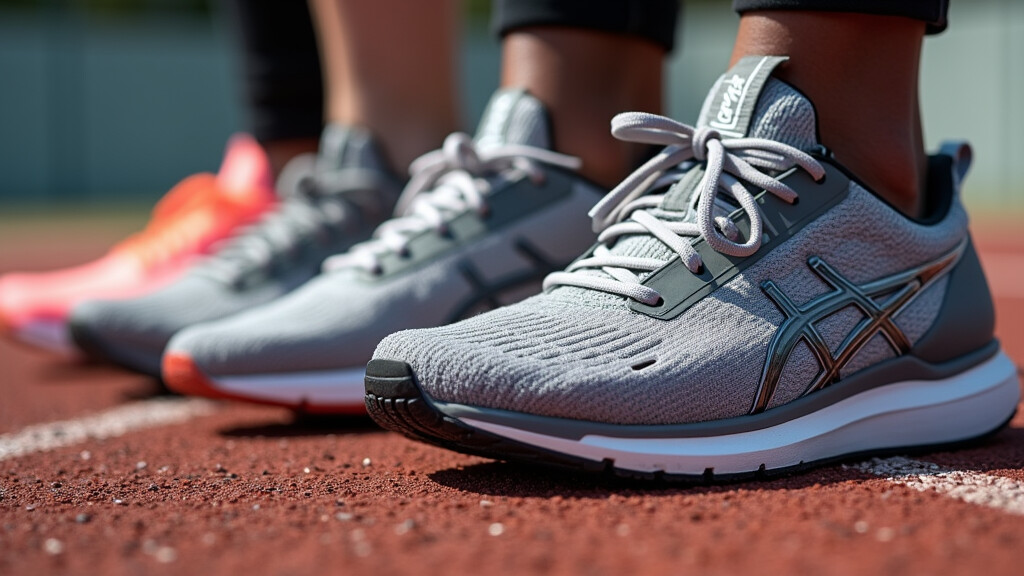Running shoes are essential gear for anyone looking to get the most out of their workouts. Whether you run on roads, trails, or treadmills, your shoes play a big role in your performance, safety and comfort. Picking the perfect pair isn’t as simple as choosing the most popular brand or the flashiest design. In this article I discuss several factors that you need to think about before making your decision.

Key Factors to Consider When Choosing a Running Shoe
To make a more informed choice consider your foot type, the terrain you plan on running, the goals you have as a runner, and finding a balance between a light and a heavy maximum cushioned shoe. Your budget also plays a part, as quality running shoes can vary widely in price.
Understanding Your Foot Type
Your foot type is one of the most important factors to keep in mind. All runner’s feet are unique, and what works for one person might not work for you. Generally, foot types are classified into three broad categories: neutral, supinated, and pronated.
Neutral foot type means when you run, your weight is evenly distributed over the bottom the foot, and you won’t typically face severe wear on any one particular area. Examination of the wear pattern on the bottom of your shoe will show even wear distributed over the whole bottom, or “outsole”, of the shoe.
Pronated foot type means the foot rolls inward slightly with each step. The typical wear pattern for pronators is concentrated along the inner edge of the outsole of the shoe. Shoes designed for pronators often contain added support in the midsole area to help prevent excessive inward movement.
Supinated foot type means the foot rolls outward. The typical wear pattern observed on the sole of a supinator’s shoe is seen along the outer edge of the outsole. You can often figure out your foot type with a simple wet test or by getting a professional gait analysis for more detailed feedback.

Matching Running Terrain with Your Shoe Choice
The kind of terrain you run on is another key component in choosing the right running shoe. Running on roads, tracks, treadmills, trails, or even indoor surfaces can greatly affect the performance you get; each setting requires different features in a shoe.
Road running shoes are built with cushioning that absorbs shock over hard surfaces like cement or asphalt. They usually have a more flexible build and are lighter in weight to prevent fatigue over long distances.
Conversely, trail running shoes are designed with additional grip and stability. They often feature tread patterns that provide extra traction on loose surfaces, rocks, or muddy paths.
If you enjoy running on tracks or in urban environments with mixed surfaces, you might prefer a shoe that offers versatility. In such cases, a blend of cushioning, support and traction works best without leaning too heavily towards any one extreme.
Paying careful attention to the conditions you most often encounter can help prevent premature wear and tear while also lowering the chances of injury.
Aligning Your Running Goals with the Right Shoe
Your running goals should play a vital role in your decision-making process. Whether you’re training for a marathon, running for fitness, or engaging in occasional sprints, the demands on your shoe vary considerably.
Runners prepping for long distances often require shoes with extra cushioning to minimize the impact on joints and muscles during sustained activity. These models are designed to provide comfort during long runs and help reduce fatigue or injury risks.
On the other hand, if speed and performance improvement are your priorities, you might favor a shoe with a lighter structure. Racing flats or minimalist designs typically offer less cushioning but more responsiveness, permitting quicker turnovers.
For those whose runs include a mix of jogging and bursts of intense effort, a balanced shoe that features both comfort and responsiveness can be ideal. Having a clear sense of your running objectives will help narrow your choices and prevent settling on a pair that might not offer the support you need.
Light Shoe vs Heavy Shoe: Weighing Your Options
Light shoes offer speed and agility, making them attractive for competitive running or tempo workouts. They are usually constructed with minimal cushioning and less structural support to create a featherlight experience. Additionally, less of the impact is absorbed by the cushioning of the shoe and is transferred to musculoskeletal structures.
Heavy shoes tend to provide more cushioning and robustness. They are excellent for high mileage runs, delivering superior shock absorption and stability. The extra weight might seem like a drawback if your goal is speed, but it can be a worthwhile trade-off for reducing strain on your joints during extended runs.
Some runners opt to invest in multiple pairs – one dedicated for speed work and another designed for endurance – and another just for races – so that they can enjoy benefits from both categories depending on their workout.
Ultimately, choosing between light and heavy shoes depends largely on what you value more: a burst of speed or extra support to guard against injury. There isn’t a one-size-fits-all answer, which is why personal preferences and training demands are key drivers in this decision.
Budget Considerations: Balancing Quality and Cost
Your budget plays a significant role in the running shoe selection process. High-end running shoes often come loaded with the latest technology and premium materials, but they can also be quite expensive. With so many options available, understanding your financial limitations from the start can help you avoid overspending.
Many well-known brands offer mid-range options that incorporate numerous high-quality features typically found in premium models. It’s important to keep in mind that a higher price does not always guarantee that a shoe will be the best or a quality match for your specific needs.
Set a realistic budget and explore choices within that range. Sales events and occasional discounts also offer a chance to secure a higher quality shoe while keeping within your spending limits. In many cases, spending a little extra on a pair that truly supports your running goals can pay off by avoiding injury and reducing the frequency of replacements.

Your Quick Guide to Choosing the Perfect Running Shoe
When it comes to making your final decision, following a simple process can streamline your search. Here are some practical steps to consider:
- Know your foot type: Figure out whether you are neutral, pronated, or supinated by either doing a simple test at home or getting a gait analysis.
- Choose the running terrain: Determine if you will be running mostly on roads, trails, treadmill or tracks, as the terrain influences factors such as grip, durability, and cushioning.
- Outline your running goals: Decide whether you need a shoe for daily training, long-distance runs, or speed-oriented workouts.
- Decide on shoe weight: Assess the benefits of opting for a light shoe versus a heavy one, bearing in mind that different workouts might call for different features.
- Set your budget: Clarify your spending limit and look for models that offer the best combination of features within that range.
Following these guidelines will help you narrow down your choices and pick a running shoe that is both comfortable, durable and efficiently priced.
Common Pitfalls to Avoid When Choosing a Running Shoe
Even with a clear understanding of what you’re looking for, there are some common mistakes that many runners make when shopping for new shoes. Identifying these pitfalls can save you time, money, and prevent discomfort later on.
- Skipping the Try-On: It might feel convenient to order or chose based solely on reviews, but trying shoes on in person can reveal subtle nuances in fit, particularly around the heel or midfoot, that images don’t capture.
- Ignoring Replacement Cycles: Running shoes wear out over time. Even if a pair feels great initially, after several hundred miles the support and cushioning will begin to degrade. Regularly updating your shoes is very important to ensure continuous comfort and to help avoid injuries.
- Overlooking Expert Advice: Specialty running stores often have staff who can assess your gait and offer personalized recommendations. Skipping this advice might leave you with shoes that aren’t suited for your particular needs.
- Chasing Trends: The flashiest shoes on the market are not always the best choice for your running style. Prioritize functionality over trends so you can enjoy comfort on every run. Nothing looks as good as being healthy and fit feels.
Advanced Tips and Tricks for Evaluating Running Shoes
If basic guidelines have helped you narrow down your choices, a few advanced tips can further refine your selection process. These insights go beyond the basics and check out more detailed considerations.
Gait Analysis: A short session at a specialty store can pinpoint slight irregularities in your step that a standard shoe might not be able to compensate for. Such insights are very important when matching a shoe with your natural biomechanics.
Shoe Fitting Sessions: Don’t hesitate to try on several models in person. Pay attention to details such as the width of the shoe, toe box room, slippage, and overall snugness. Even if you believe you know your size, different brands may fit differently due to size variations by different manufacturers.
Break-In Periods: Many runners prefer to gradually break in a new pair of shoes to see how they perform over longer distances. Taking a few short runs with a new pair can reveal whether the shoe maintains its comfort and durability during extended use.
Material Quality: Modern running shoes use innovative materials that could improve performance significantly. Breathable mesh fabrics, durable rubber compounds for the outsole, and advanced cushioning foams are technologies to consider if you want a shoe that stands up to rigorous training. These materials not only improve the overall feel of the shoe and minimize musculoskeletal stress but also help maintain its structure over time.
Additional Tips for Maintaining Your Running Shoes
Beyond selecting the perfect pair of shoes, taking care of them is equally important. Proper maintenance can extend the life of your running shoes and keep them performing at their best.
After each run, allow your shoes to air out in a well-ventilated space. This helps reduce moisture buildup, which can break down the materials over time.
Cleaning your shoes regularly will also help maintain their look and function. Use a soft brush to remove dirt and debris and spot-clean with mild soap and water when needed.
Avoid placing them in direct sunlight for long periods as excessive heat can degrade cushioning materials. Simple care routines like these not only prolong the life of your shoes but also help ensure a consistent performance during your runs.
Pro tip, check the wear patterns on the outsole (bottom) periodically. If you notice uneven wear, it might be time to re-assess your gait or consider a new pair. Maintaining a small rotation of shoes can also prevent overuse of a single pair, ensuring you always have a reliable option available.
Wrapping Up: Choosing the Right Running Shoe
Choosing the right running shoe is about finding a pair that offers the performance, comfort, and protection you need for your specific running routine. Keeping an eye on your foot type, the conditions in which you will run, and your training goals ensures that your choice is well thought out.
It is also very important to consider seasonal changes. Warmer weather might call for more breathable designs, while colder months could benefit from slightly more insulated features.
When you put together all the elements—fit, function, and budget—you create a recipe for success. Enjoy your runs knowing that you have made a well-informed decision and that your shoes support you every step of the way.

Every good run starts with a solid foundation, and having the right shoes can make all the difference when it comes to running comfortably and safely.


You know I am not a runner, I had no idea there was so much science in picking out a running shoe. I have always just went to the running shoes found a shoe that looked good to me felt comfortable and I was good to go. I had no idea you need to know how you walk. I have seen peoples shoes that are worn like you said Pronation and supination. Do they have any running shoes that help to correct these issues?
I also did not know there was so much going into the weight, material, and weights. This type of shoe has a lot of science behind them. I have seen these shoes that look like feet ( have toes holders for your toes) and very thin, are these type of shoes only for use on a track or treadmill?
Hi Neal,
Yes, there are multiple choices from almost every brand of shoe manufacturer that address pronation and supination. You only need to know which category you are in and then choose accordingly.
Toe Shoes or “minimalist shoes” claim to provide the most natural feel. Some people say that because they reduce reliance on cushioning toe shoes force foot muscles to work harder and thereby strengthening the muscles. It is also claimed that toe shoes improve proprioception, again due to a lack of support, improving balance and alignment. But they are not suitable for everyone. Podiatrists have expressed concerns about barefoot shoes. They acknowledge strengthening and the promotion of natural foot function, but this is usually best for experienced runners. For the average person there is concern regarding the lack of support, protection and cushioning especially for people with preexisting conditions such as those with arthritis, bad Knees, flat feet, and severe overpronation. Due to their lack of support and cushioning they may not be beneficial for the knees, especially for those with existing knee and joint issues. I do not wear them, and, personally, I do not think they are helpful.
But as you mention you are not a runner. So, you could give them a try if you want to see if the “natural experience” is for you. It is important to remember that runner or not you should always choose footwear that is best for your feet, knees and overall wellness.
This article offers an excellent and thorough guide for anyone looking to choose the right running shoes. I appreciated how it breaks down essential factors like foot type, running terrain, and training goals in a clear and practical way. The explanation of neutral, pronated, and supinated foot types was especially helpful, as many runners overlook how foot mechanics affect performance and injury risk. The section on matching shoe features to terrain and the comparison between lightweight and heavily cushioned shoes provided valuable context for different running needs. I also liked the emphasis on trying shoes on and avoiding common pitfalls, which are often missed in similar guides. The tips on shoe maintenance and understanding material quality add even more depth. Overall, this is a well-rounded and informative piece that helps both beginners and seasoned runners make smarter choices. Great resource!
Hi Andre,
I’m glad you liked the article. You seem to have an excellent understanding the points I tried to cover. Shoes are the star of the show when it comes to running gear. And function over fashion is best rule to follow. As you mention the first step is understanding your foot and the different types of shoes that would be best for your running style and goals. And you can usually find a shoe that both meets those criteria and also looks good. In my own case, for the time being, unfortunately, I run exclusively in an urban setting mostly on concrete, so I choose shoes with extreme cushioning paired with moisture-wicking medium weight socks. This prevents blisters and joint soreness.
Thank you for reading my article and for your kind compliments. I am encouraged and happy it seems to be a good resource. Here at RunningGearForBeginners.com the goal is to provide high quality information and the best resources as well as the support and encouragement to by the best you can be for your own health and fitness.
Kevin